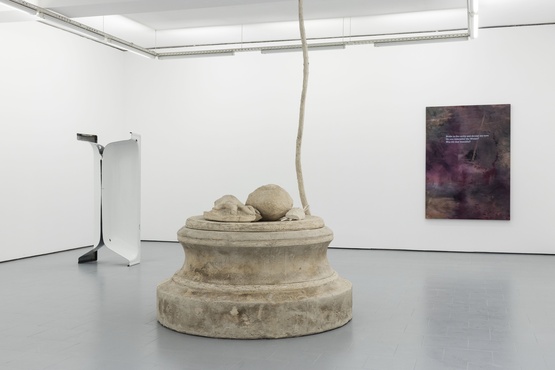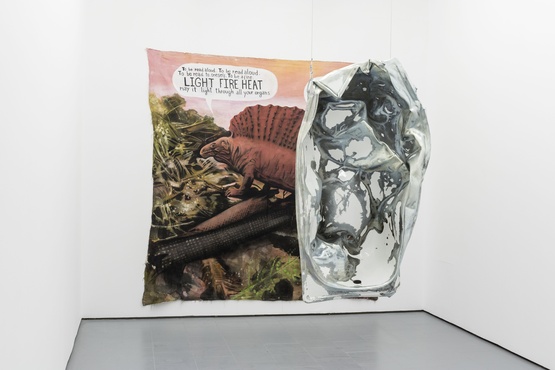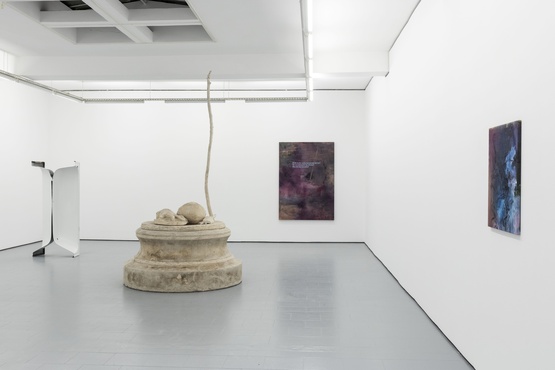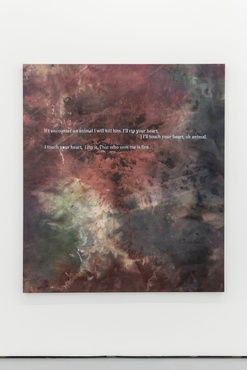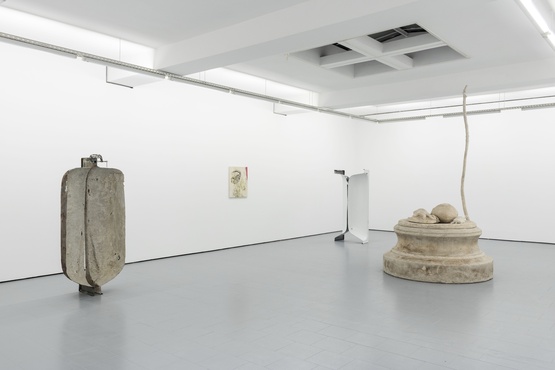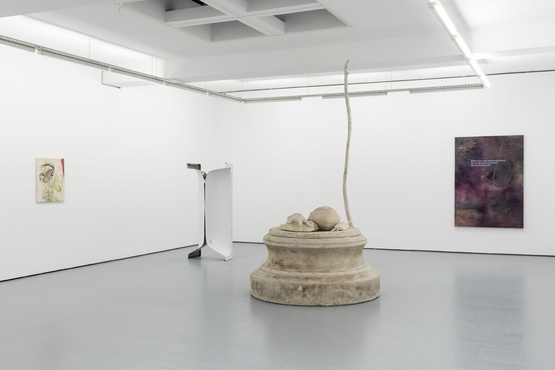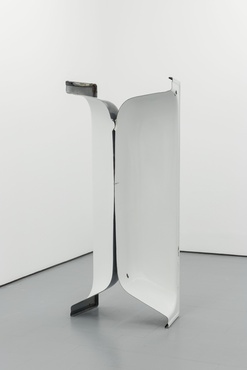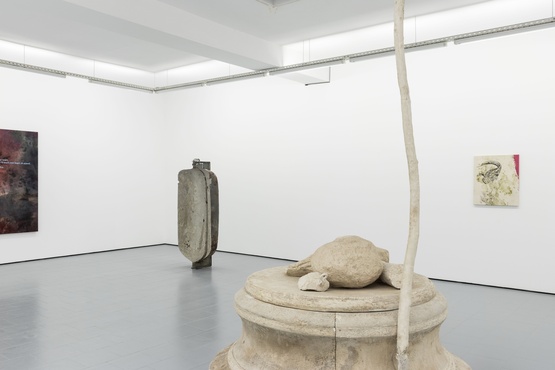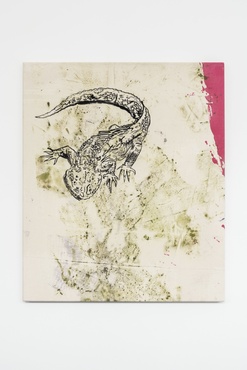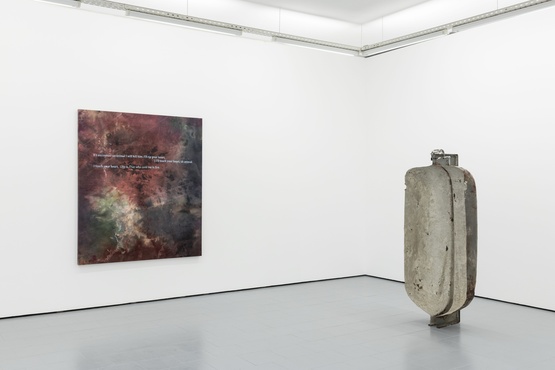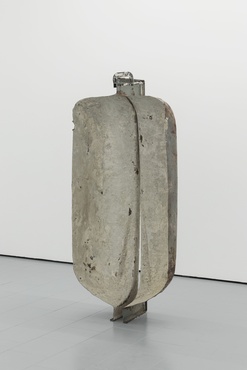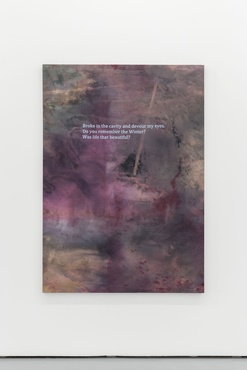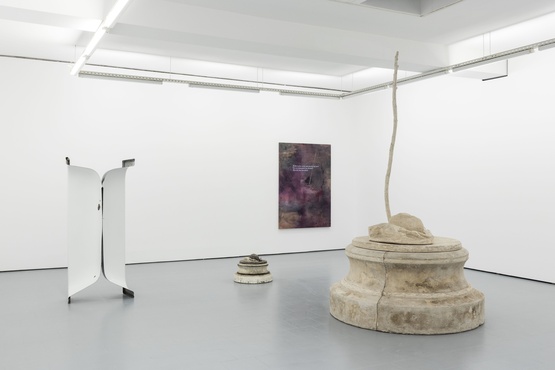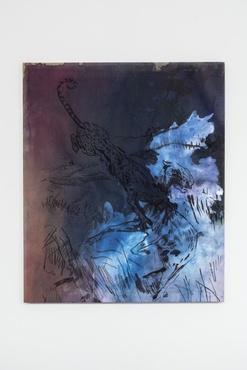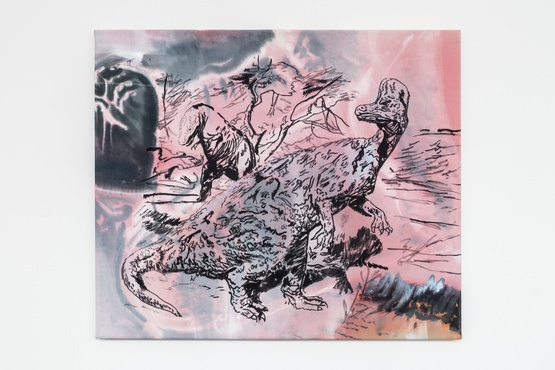Tout s’écrase
Je t’aime plus loin que toi
J’aimerai quiconque entendra que je crie que je t’aime
Trente mille ans
J’appelle
J’appelle celui qui me répondra
Je veux t’aimer je t’aime
Les Mains négatives, Marguerite Duras, 1979
Negative hands is an anonymous gesture. It is the force with which we seize objects, intensities and knowledge, and inscribe them in the form of a sign, a becoming. This evolving work establishes a relationship with the future, with a community to come, that lies between the subject and the work, a relationship that aims to achieve permanent movement. Negative hands affixes us to the enigma of rupestrian images and the permanent oscillation between the future and the past, the cultural and the natural, the magical and the profane.
The title Negative Hands is borrowed from Marguerite Duras’ poem, les mains négatives. The image of hands inscribed in caves also refers to the force that built The cave in the gallery’s basement. The hands in contact with the wall are a form of erotic and expansive empathy, that embraces a complex network of inner stimuli and impulses, as well as everyday impressions and expressions. The exhibition also enables us to learn a set of forces and intensities found in The cave. via the works of Hugo Canoilas, Vasco Costa, and Filipe Feijão.
Canoilas presents two sets of paintings. The first is developed around fragments of a poem, resulting from a meandering journey through texts about the creation of the world, from various geographical and historical sources. The second set of paintings presents prehistoric or extinct animals. Both the graphic image and the text, place abstract paintings in a second plane of communication, produced with fluid acrylic paint and anilines that become part of the body of the fabric.
The realistic image and the text require us to apply our sense of reason, and thus react to what we see, releasing the abstract paintings for passive communication, free from prejudice, and ideal for receiving a painting that has been produced freely, which is initiated by its author while simultaneously appearing before him. The inner strength of abstract paintings combines the energy of the animal gaze, marked by horizontality and handling, and the manner in which the materials dry on the surface.
Vasco Costa’s sculptures are bodies. The body as the zero point of the world, echoing the ideas of Michel Foucault, that are directly linked to these sculptures, and to which he lends the title of his book, The Utopian Body (1966). The bathtub presents itself as a synesthetic space, mediating our relationship with everyday life, in a passage from its horizontal functionality to the vertical body. In turn, this body is a negative representation, as suggested by Barnett Newman and especially of the space beneath a chain, evoked by De Kooning and materialised by Bruce Nauman.
The sculptural acts produced on these objects are impressions, sublimations and aggressions on the bodies. They are short narratives made possible for sculpture and art in general by the space created by art criticism in relation to the main currents of the History of the Art and by openness to the parity between different genres. Bathtubs constitute the mediating space between the body and society, and their transformed forms highlight a set of forces exercised by society on these bodies.
Filipe Feijão’s works are indelibly linked to the construction of a sculptural work outside his home, over a 15-year period. The work consists of a two-storey wooden staircase, which has continuously received various found objects, cacti and sculptures, all shaped by the rain and other elements that give them the quality of something which is irreproducible - a living organism in a constant process of addition and subtraction of its parts. The works presented in this exhibition deal precisely with this unique quality, and reproduce, at different scales, parts of these sculptural compositions, that gain an autonomous status as works of art. Feijão’s working method reflects a broader view of sculpture, when questioning the raising of the form, the ruin, gravity and relativity of sculptural work and its social inscription, aware that his wooden staircase was developed using a secret process, far from the gaze of the art world.



